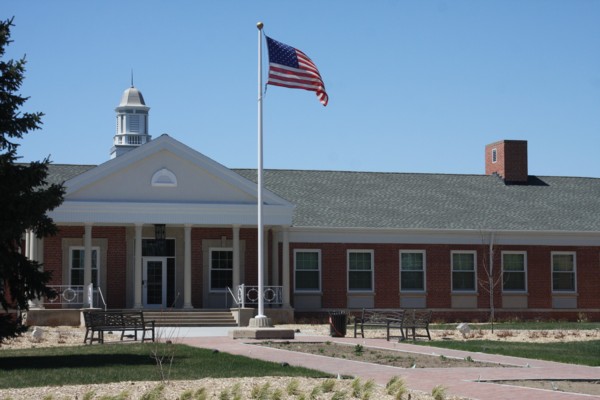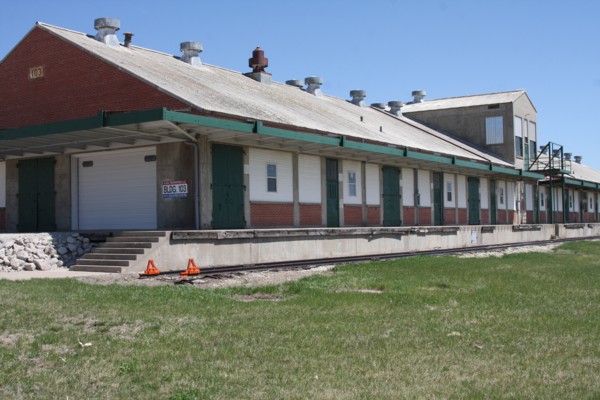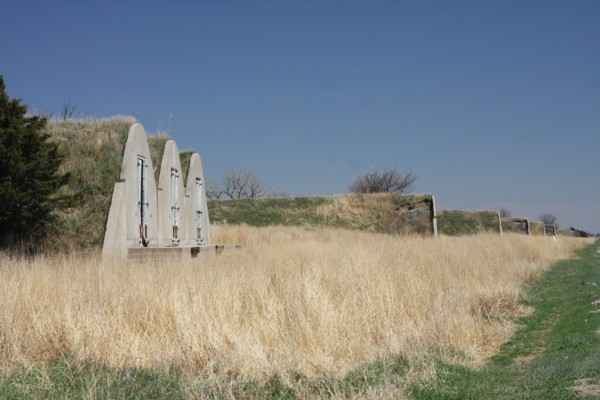Fortunately, I had a second destination for the day. It was the Naval Ammunition Depot.
Hastings was buzzing with excitement on June 10, 1942, six months after Pearl Harbor, when Senator George Norris and Congressman Carl Curtis announced that the Navy had authorized the establishment of a $45,000,000 Naval Ammunition Depot southeast of Hastings. The Hastings area was chosen because of its abundance of electrical power from the Tri-County project, its location equidistant from both coasts and the availability of railroads. The government immediately began the process of taking 48,753 acres of farmland, located mostly in Clay County, from 232 owners.
From the Adams County Convention and Visitors Bureau
The Naval Ammunition Depot known locally as "The NAD," was the largest of four munitions depots in the country and was known for supplying 40 percent of the Navy's ammunition supply at one point during WWII.
The facility produced bombs, rockets, torpedoes, mines, bagged powder and all calibers of smaller ammunition.
There were three other NAD plants located in Burns City, Indiana; McAlester, Oklahoma and Hawthorne, Nevada.
After the NAD served it’s military usefulness
…in December 1958 disestablishment was ordered, to be completed no later than June 30, 1966.
In September 1964, 10,236 acres near Clay Center were transferred to the U.S. Department of Agriculture for the Meat Animal Research Center. The administrative headquarters, comprising 640 acres and 28 buildings were transferred to Central Community College in 1966. During 1966 and 1967 surplus land at the NAD was sold to various business and industrial firms who comprise what is now known as Hastings Industrial Park East.
I went to the NAD with a wonderful map (pdf) provided by the Convention & Visitors Bureau.
This was the NAD Administration Building. In Naval terms it was referred to as “Mainsides”. It is now part of the Community College.

Buildings like this were used for “inert storage” or storage of materials to make the munitions.

And these are the bunkers where the munitions were stored. They go on for about five or six miles, and I must say they are kind of an eerie sight.


During WWII civilian employees were paid 75 cents an hour and the work week was 60 hours. Weekly pay was slightly less than $45.
More of my photos are here
The most comprehensive information about the NAD is here
The Historical Society has photos from WWII here
Take a tour around the world via your computer by visiting That's My World!
 |





12 comments:
That's an interesting story. Amazing times. God bless.
Interesting indeed.
Thanks for sharing.
Have a great week.
Mary Elizabeth @ Now and Then
Excellent photos and very informative posting, thanks so much for sharing.
Have a great week.
Guy
Regina In Pictures
Very interesting post and photographs. Maybe another time you can find the greenscape park. That sounds interesting too.
Very interesting! And so many bunkers! They make a good photo!
Very informative. I've been to Lincoln but did not see the NAD
a most interesting post...we so often forget how great the war effort was in wwII...and how the whole country was involved.
thanks for sharing these photos and story.
That's neato! My son is currently serving the US Navy he would really be interested in this...
Thanks for sharing:)
How interesting that Naval Ammunition Depots were so far inland! I NEVER would have guessed that. NEVER EVER!
Thanks for sharing this, the buildings are interesting but I really like seeing the bunkers, Thanks for the bit of history as well.
mine is here
http://aguthrieimages.wordpress.com/2009/04/27/thats-my-world-ruby-tuesday/
That is so interesting. Loved this post and thought your photos were great. I am going to share them with my father-in-law who is a WWII vet. Thank you for sharing them.
5 or 6 miles of these munitions dumps. wow amazing that there was so much munitions to store. here in They do look strange, but my husband says he remembers similar sorts of buildings in his small town of Mt Somers up in the mountains here in NZ.
Post a Comment